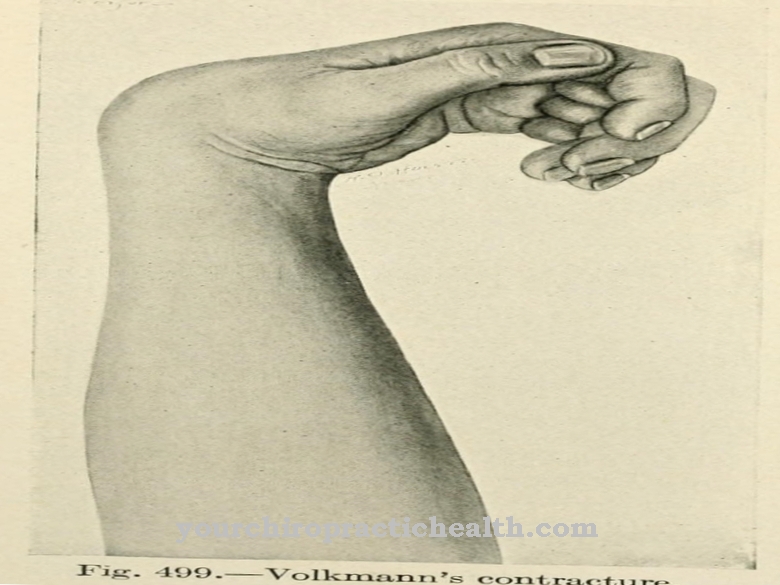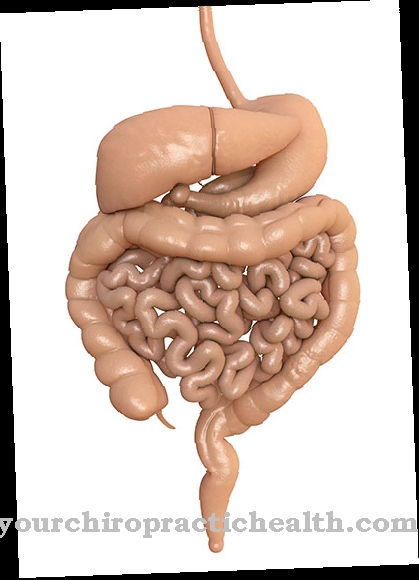BSE is the abbreviation for Bovine spongiform encephalopathy and is a bovine disease; colloquially it is called Mad cow disease designated. The disease is characterized by altered proteins. Eating meat from sick animals can cause Creutzfeldt-Jakob disease in humans. BSE has been known since 1985, but probably arose as early as 1982 in Great Britain, then undetected.
What is mad cow disease?
.jpg)
© Herby (Herbert) Me - stock.adobe.com
BSE is a contagious bovine disease that first appeared in Great Britain. The abbreviation BSE stands for Bovine Spongiform Encephalopathy, which means something like spongy brain disease that affects cattle.
The disease is triggered by altered proteins that attack the animals' brains and lead to a degenerative (degrading) change in the brain tissue there. The brain is decomposed and takes on a spongy appearance with time, with holes and gaps in which the proteins are deposited.
The change in the brain causes the cattle to behave abnormally, they become aggressive and suffer from movement disorders. After the first case in the UK in 1985, more and more cattle began to show the same symptoms and died after a while.
Examining the carcasses revealed the changes in the brain. If you were unsure at first, today it is definitely clear that BSE can also be transmitted to humans and causes a type of Creutzfeldt-Jakob disease there.
causes
The cause of BSE are so-called prions; these are the body's own proteins that have changed incorrectly and have adopted a different structure. They are located in the brain, spleen, lymph nodes, and spinal cord. It is believed that these prions were contained in the sheep meal with which the cattle were fed at the time.
This animal meal consisted of waste products from the slaughter of sheep and is actually not adequate food for cattle, as they are herbivores. In sheep, a disease called scrapie has been known for a long time, it has symptoms similar to BSE. In all likelihood, the prions were transmitted to the cattle through the use of pathological carcasses as feed.
It has also been found that sick cows can infect their calves while they are still in their womb. However, the exact incubation period for BSE is not yet known. This is the period of time between being infected and the onset of the disease. So far it has only been found that this time can be between 18 months and several years.
You can find your medication here
➔ Medicines against memory disorders and forgetfulnessSymptoms, ailments & signs
The first symptoms of bovine spongiform encephalopathy (BSE) are often shown by infected animals around the age of four to five years. The first thing to observe is [[[behavioral disorder]]. The cattle are either significantly more aggressive than before or react over-anxious and disturbed to their surroundings.
As the disease progresses, the animals lose control of their motor skills, especially their legs, and begin to sway and stagger. They often buckle and fall. At a very advanced stage, the animals can no longer get up on their own. Usually death occurs a short time later.
Only then, after the animal has died, can the disease be reliably diagnosed. An examination of the brain then reveals the changes characteristic of the disease. In particular, severely swollen and dead astrocytes (supporting cells) can be observed. The shape of the brain changes drastically.
The organ usually resembles a holey sponge. The connections between the nerve tracts are interrupted due to the holes and usually also dead. Pathogenic prions, which cause the disease, can also be detected under the microscope. Eating the meat of infected animals can lead to a form of Creutzfeldt-Jakob disease in humans that has a similarly destructive effect on the brain.
Diagnosis & course
The first symptoms of BSE are disturbances and abnormalities in behavior and usually show up in cattle around the age of four to six years. The animals become aggressive, sometimes overly fearful, and they can no longer be touched. Movement disorders are added in the further course.
The animals can no longer control their limbs, they move strangely, they stagger and often they fall. You kink your legs and can no longer walk. After the first symptoms appear, it only takes weeks, sometimes months, for the animals to die. BSE can only be diagnosed with certainty after death, as the brain has to be examined for this.
When looking at the brain tissue through the microscope, one can then see that the supporting cells of the brain, the so-called astrocytes, have swollen and subsequently died. One can see the spongy, holey consistency of the fabric.
It can also be seen that the connections between the nerves were interrupted by the holes, which also caused them to die. In addition, the triggers for BSE, the prions, can be detected under the microscope.
Complications
BSE occurs predominantly in cows; if the pathogen is passed on to humans, serious complications arise. When infected with the BSE virus, there is initially increased sensitivity to pain and anxiety, but also gait disorders and paralysis, which increase the risk of accidents. Often there are also chronic sensitivity disorders that make everyday tasks much more difficult.
Furthermore, behavioral disorders can occur, which in severe cases contribute to the development of anxiety disorders. Affected people are also often excluded from their social environment and feel an intensification of the symptoms. In the further course it comes to emaciation and after a few months finally to death.
In less severe cases, an infection can contribute to the development of diseases such as Creutzfeldt-Jakob disease. Possible complications arise from the symptoms that occur in each case, which range from urinary tract infections to pneumonia or rigidity of the brain.
Usually there are also difficulty concentrating, forgetfulness, paralysis, muscle paralysis and visual disturbances, which also increase as the infection progresses.Due to the severity of the complications, a doctor should always be consulted if BSE is suspected.
When should you go to the doctor?
If you suspect you have BSE, you should consult a doctor immediately. Medical advice is required as soon as the first symptoms appear, such as typical memory and concentration disorders, increased irritability and insomnia.
At the latest when visual disturbances, twitching of the muscles and symptoms of paralysis occur, which do not subside after a few days, you should see a doctor if you suspect BSE. This is especially true if there is a justified suspicion of infection.
For example, if there has been contact with infected animals, unusual symptoms must be taken particularly seriously. The same applies after an operation in which the surgical instruments may have been contaminated. The Creutzfeldt-Jakob disease on which BSE is based usually occurs between the ages of 55 and 80.
If the symptoms mentioned increase during this period, a visit to a doctor is recommended. Since the disease progresses quickly, the symptoms should be clarified quickly. Prompt treatment can usually at least slow down the course of the disease.
Doctors & therapists in your area
Treatment & Therapy
So far there is no therapy against BSE. The infected animals usually die a few weeks or months after the first symptoms appear.
Outlook & forecast
The prognosis for mad cow disease and the associated new variant of Creutzfeldt-Jakob disease does not allow any prospect of a cure. Instead, it has similar courses in domestic cattle and humans, which always end with the death of the person concerned.
Affected cattle die within a few months (up to five) from the effects of brain degeneration. This is preceded by motor problems, aggressiveness and the gradual failure of all abilities that the cow previously had.
However, in people who have a form of mad cow disease known as nvCJD, the disease progresses slightly more slowly. An average of 14 months pass before the person concerned dies.
The course is very similar to other variants of Creutzfeldt-Jakob disease in the middle and later stages of the disease. However, at the beginning it shows more psychiatrically relevant symptoms. Anxiety disorders and depression should be mentioned here in particular. This is followed by sensory disorders and then cognitive and motor disorders.
After all, the person concerned always dies due to a dehiral rigidity, which means a suspension of all vital functions. The outlook for nvCJD is unclear. Potentially BSE-contaminated products are banned, but not all epidemiological issues have been resolved. However, it can be assumed that the mad cow disease can be contained by appropriate protection of feed, cattle and humans.
You can find your medication here
➔ Medicines against memory disorders and forgetfulnessprevention
A small measure of the transmission of BSE can be prevented by separating sick animals from the rest of the herd. However, since the symptoms only appear long after the infection, transmission may of course have taken place before. In 2001, the feeding of animal meal was banned across Europe as a preventive measure; however, it is now permitted again under certain conditions.
People should therefore check carefully who the beef that is intended for consumption comes from. It's best to buy only beef from a farmer you know and know how to raise his cattle. It is also advisable to buy only organic meat in the supermarket or organic market. Nevertheless, one should also pay close attention to the origin of the meat or ask the dealer.
Aftercare
BSE affects cattle. It leads to death within a few weeks or months. There is currently no therapy. The authorities slaughter the whole herd if an animal is diagnosed with mad cow disease. The carcasses are disposed of separately in order to prevent infection. This procedure is intended to rule out recurrence.
It is assumed that feeding animal meal causes the development of BSE. The most effective means of aftercare is to isolate the cattle that show the typical symptoms. The research is still ongoing. Mad cow disease can spread to humans. Those affected then suffer from a variant of Creutzfeldt-Jakob disease. It is also not curable.
So far, no people have been affected in Germany. There was a small number of sick people in other countries such as Great Britain. Since a clear diagnosis is only possible after death, follow-up care can only be carried out to prevent re-infection. This task cannot be performed by individual patients.
Rather, the authorities have issued ordinances to ensure that the beef is safe. This includes the ban on animal meal feed. Animal products may also no longer be sold in stores if only one cattle in a herd is sick.
You can do that yourself
Medically relevant self-help measures are not available in the case of this disease. To fall ill with a variant of Creutzfeldt-Jakob disease always means certain death for those affected in the event of a severe course of the disease.
Assuming that the dementia and paralysis that occurs make the person concerned a need for care within a few months, he is only well advised to use the remaining time. If the diagnosis BSE is made or suspected, he should be self-interested in perceiving everything he wanted to perceive and can do at the time.
In addition, you should work towards a good time with the environment. Not only during the last months or weeks in which the sick person has to be cared for around the clock does he need a caring environment. The time of the disease should also be meaningful and designed according to the wishes of the sick person.
Since the disease is not contagious in normal human contact, there is no need for family members to take any precautionary measures.
It is often the responsibility of the environment to continue to support those affected despite their possible changes in nature and behavior. The feeling of not being left alone tends to lead to a better attitude towards life in patients.




.jpg)



















.jpg)



